Дэниел Ергин - В поисках энергии. Ресурсные войны, новые технологии и будущее энергетики
- Название:В поисках энергии. Ресурсные войны, новые технологии и будущее энергетики
- Автор:
- Жанр:
- Издательство:Array Литагент «Альпина»
- Год:2013
- Город:Москва
- ISBN:978-5-9614-3343-2
- Рейтинг:
- Избранное:Добавить в избранное
-
Отзывы:
-
Ваша оценка:
Дэниел Ергин - В поисках энергии. Ресурсные войны, новые технологии и будущее энергетики краткое содержание
В поисках энергии. Ресурсные войны, новые технологии и будущее энергетики - читать онлайн бесплатно ознакомительный отрывок
Интервал:
Закладка:
12. George H. W. Bush, press release, September 1, 1988, George Bush Presidential Library; The New York Times, September 2, 1988 (“White House effect”); Alan D. Hecht and Dennis Tirpak, “Framework Agreement on Climate Change: A Scientific and Policy History,” Climactic Change 29 (1995), p. 383.
13. Time, August 20, 1923, June 11, 1934, June 19, 1939, August 19, 1955.
14. Sports Illustrated, March13, 1989; Time, August 6, 1934 (“U. S. Sahara”); New York Times, September 4, 1988 (“packing our bags”); Irving M. Mintzer and J. A. Leonard, “Visions of a Changing World,” in Negotiating Climate Change: The Inside Story of the Rio Convention, eds. Irving M. Mintzer and J. A. Leonard (Cambridge: Cambridge University Press, 1994), p. 52 (“science fiction”).
15. Daniel Yergin and Joseph Stanislaw, The Commanding Heights: The Battle for the World’s Economy (New York: Touchstone, 2002), pp. 95–96.
16. Margaret Thatcher, The Downing Street Years (London: HarperCollins, 1993), pp. 640–41; Margaret Thatcher, speech to the Royal Society, September 27, 1988.
17. Weart, The Discovery of Climate Change, p. 12 (“indispensable man”); Bert Bolin, A History of the Science and Politics of Climate Change: The Role of the Intergovernmental Panel on Climate Change (Cambridge: Cambridge University Press, 2008), p. 23 (“As chairman”); interview with Danel Esty.
18. Bolin, A History of the Science and Politics of Climate Change, pp. 48–49, 58; James Baker, speech, in Department of State Bulletin, April 1989.
19. Interview with Daniel Esty.
20. Bolin, A History of the Science and Politics of Climate Change, p. 63.
21. W. K. Reilly, Breakdown on the Road from Rio: Reform, Reaction, and Distraction Compete in the Cause of the International Environment, 1993–94, Arthur and Frank Payne Lecture, Stanford University (“bet your economy”); interview with William Reilly (“dined out”); George Will, Washington Post, May 31, 1992 (“red roots”).
22. Interview with John Sununu; Los Angeles Times, March2, 1990 (“nuclear power fights”).
23. Cable from American Embassy in Bonn to White House, March13, 1992, Folder 45045–020, George H. W. Bush Presidential Library; New York Times, May 9, 1989; New York Times, March 24, 1992.
24. George H. W. Bush, press conference, April 10, 1992.
25. The New York Times, June 13, 1992 (“lone holdout”).
26. The New York Times, June 14, 1992 (“second to none,” “Darth Vader”); interview with William Reilly.
27. Irving M. Mintzer and J. Amber Leonard, eds., Negotiating Climate Change: The Inside Story of the Rio Convention (Cambridge: Cambridge University Press, 1994), ch. 1, appendix (“dangerous anthropogenic interference”).
28. Interview with William Reilly.
Глава 23. Создание рынка
1. Michael Sandel, “It’s Immoral to Buy the Right to Pollute,” op-ed, New York Times, December 17, 1997; interview with Fred Krupp.
2. Ronald Coase autobiography, Nobel Prize Web site (“underrate your abilities”).
3. Ronald Coase, “The Problem of Social Cost,” Journal of Law and Economics, vol. 3, (1960), pp. 1–44 (“externalities”).
4. John H. Dales, Pollution, Property & Prices: An Essay in Policy-making and Economics (Toronto: University of Toronto Press, 1968), ch. 6; David Montgomery, “Markets in Licenses and Efficient Pollution Control Programs,” Journal of Economic Theory 5, no. 3 (1972), pp. 395–418.
5. Richard Nixon, “Message to the Congress,” August 10, 1970 (“war on pollution”); Robert W. Hahn, “Economic Prescriptions for Environmental Problems: How the Patient Followed the Doctor’s Orders,” Journal of Economic Perspectives 3, no. 2 (1989), pp. 97–98.
6. Richard Conniff, “The Political History of Cap and Trade,” Smithsonian, August 2009 (Canadian prime minster).
7. Interview with C. Boyden Gray; Bruce A. Ackerman and Richard B. Stewart, “Reforming Environmental Law: The Democratic Case for Market Incentives,” Columbia Journal of Environmental Law 171, no. 3 (1988).
8. Interviews with Fred Krupp and C. Boyden Gray.
9. Kathy McCauley, Bruce Barron, and Morton Coleman, Crossing the Aisle to Cleaner Air: How the Bipartisan “Project 88” Transformed Environmental Policy (Pittsburgh: University of Pittsburgh, 2008), p. 25 (“totally different concept”); Robert N. Stavins, “What Can We Learn from the Grand Policy Experiment? Lessons from SO2 Allowance Trading,” Journal of Economic Perspectives 12, no. 3 (1998), p. 74 (“ decision-making”).
10. Joseph Goffman and Daniel J. Dudek, “The Clean Air Act Acid Rain Program: Lessons for Success in Creating a New Paradigm,” presentation, 88thAnnual Meeting, Air & Waste Management Association, June 18–23, 1995, pp. 5, 7, 9. Догадывались ли Гоффман с Дудеком об этом или нет, но они проводили идеи «ученого писаки». На деле это повторение сути исторической статьи Фридриха фон Хайека, датированной 1945 г., об использовании знаний в обществе: о том, что рассредоточенный рынок с множеством лиц, принимающих решения, который координируется системой ценообразования, оказывается лучше информированным, действует и обновляется быстрее, чем централизованно управляемая экономика. См. Frederich A. Hayek, “The Use of Knowledge in Society,” American Economic Review 35, no. 4 (1945), pp. 519–30.
11. Stavins, “What Can We Learn from the Grand Policy Experiment?” p. 69.
12. Environmental Protection Agency, “Acid Rain and Related Programs: 2008 Highlights,” December 2009; Environmental Defense Fund, “The Cap and Trade Success Story,” February 12, 2007; Lauraine G. Chestnut and David M. Mills, “A Fresh Look at the Benefits and Costs of the U. S. Acid Rain Program,” Journal of Environmental Management 77 (2005), pp. 252–66.
13. A. Denny Ellerman, Paul L. Joskow, Richard Schmalensee, Juan-Pablo Montero, and Elizabeth M. Bailey, Markets for Clean Air: The U. S. Acid Rain Program (Cambridge: Cambridge University Press, 2000), p. 314 (“impossible to believe”); interview with Joseph Goffman; Fred Krupp, “The Making of a Market-Minded Environmentalist,” Strategy + Business 51 (2008), pp. 1–7.
14. Bert Bolin, A History of the Science and Politics of Climate Change: The Role of the Intergovernmental Panel on Climate Change (Cambridge: Cambridge University Press, 2008), pp. 87–89, 112–13 (“best estimated”); Richard A. Kerr, “It’s Official: Humans Are Behind Most of Global Warming,” Science 291, no. 5504 (2001), p. 566.
15. Bolin, A History of the Science and Politics of Climate Change, pp. 108, 139.
16. Bolin, A History of the Science and Politics of Climate Change, pp. 137, 182, 196 (“lacked the scientific knowledge”); Richard S. Linzden, “Taking Greenhouse Warming Seriously,” Energy and Environment 18, no. 7–8 (2007), pp. 937–50 (“iconic claim”).
17. Interview.
18. Interviews with Stuart Eizenstat, David Sandalow, and Joseph Goffman.
19. Interview with Stuart Eizenstat.
20. Interview with Chuck Hagel.
21. Krupp, “The Making of a Market-Minded Environmentalist,” pp. 1–7 (policies and measures); interview with Stuart Eizenstat (“three issues”).
22. Interview with Stuart Eizenstat.
23. Bolin, A History of the Science and Politics of Climate Change, pp. 151, 159.
24. Interviews with Chuck Hagel and others.
Глава 24. Проблема мирового значения
1. Tony Blair, A Journey: My Political Life (New York: Knopf, 2010), pp. 554–60.
2. Nicholas Stern to author; Nicholas Stern, The Global Deal: Climate Change and the Creation of a New Era of Progress and Prosperity (New York: Public Affairs, 2009), p. 204.
3. Interviews with James Connaughton (“zippo”) and Jeffrey Kupfer; Christine Todd Whitman, It’s My Party Too: The Battle for the Heart of the GOP and the Future of America (New York: Penguin, 2005) pp. 170–73; Ron Suskind, The Price of Loyalty: George W. Bush, the White House, and the Education of Paul O’Neill (New York: Simon & Schuster, 2004), pp. 88, 99, 121–22; Paul O’Neill, Science, Politics, and Global Climate Change (Pittsburgh: Alcoa, 1998).
4. Interview with Donald Evans.
5. Interview with James Mahoney; Granger Morgan, H. Dowlatabadi, M. Henrion, D. Keith, R. Lempert, S. McBrid, M. Small, T. Wilbanks, eds., Best Practice Approaches for Characterizing, Communicating, and Incorporating Scientific Uncertainty in Decisionmaking (Washington, D. C.: National Oceanic and Atmospheric Administration, 2009).
6. Blair, A Journey, p. 311 (“masterstroke”).
7. Interview with David King; David King, “The Science of Climate Change: Adapt, Mitigate or Ignore?” The Ninth Zuckerman Lecture, October 31, 2002; David King, “Climate Change Science: Adapt, Mitigate, or Ignore?” Science 303, no. 5655 (2004), pp. 176–77.
8. CENTRA Technology Inc. and Scitor Corporation, “Russia: The Impact of Climate Change to 2030: Geopolitical Implications,” September 2009.
9. Interview with Richard Sandor; Richard Sandor, “Market Based Solutions for Climate Change,” paper, September 1, 2004.
10. Intergovernmental Panel on Climate Change, Climate Change 2007: The Physical Science Basis (New York: Cambridge University Press, 2007), pp. 2, 12, 85–88; Al Gore remarks at the Wall Street Journal Eco-Nomics conference, March3, 2009.
11. Nicholas Stern, The Economics of Climate Change: The Stern Review (Cambridge: Cambridge University Press, 2007); Economist, November 2, 2006.
12. Interviews with William Nordhaus and Nicholas Stern.
13. John Browne, Beyond Business (London: Weidenfeld and Nicolson, 2010), p. 80; John Browne, speech, Stanford University, May 19, 1997.
14. Daniel C. Esty and Andrew S. Winston, Green to Gold: How Smart Companies Use Environmental Strategy to Innovate, Create Value, and Build Competitive Advantage (New Haven: Yale University Press, 2006); Global Climate “Backgrounder,” February 25, 1997 (“radical reductions”).
15. Al Gore, Nobel Peace Prize Lecture, Oslo, Norway, December 10, 2007.
16. Rajendra Pachauri, “Energy and Growth: Beyond the Myths and Myopia,” Energy Journal 10, no 1 (1989), p. 12 (“continuing insularity”); “A Conversation with Nobel Prize Winner Rajendra Pachauri,” Yale Environment 360, June 3, 2008 (“alarm”); interview with Rajendra Pachauri, CERAWeek, February 11, 2008 (“no room”).
17. Nancy Pelosi, speech, Johns Hopkins University Commencement, May 21, 2009.
18. Transcript, “Departments of Veterans Affairs and Housing and Urban Development and Independent Agencies Appropriations for 1999 – Part 7 – Environmental Protection Agency,” U. S. House of Representatives Appropriations Committee, 1998; Carol Browner, speech, MIT Energy Initiative, April 13, 2009; George W. Bush, letter to Chuck Hagel, March13, 2001 (“not a ‘pollutant’”).
Читать дальшеИнтервал:
Закладка:
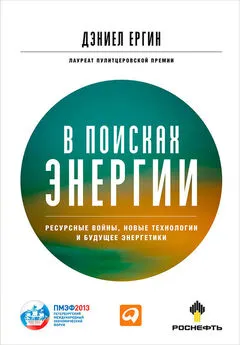

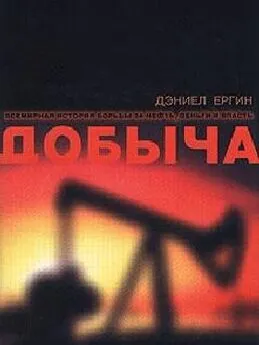
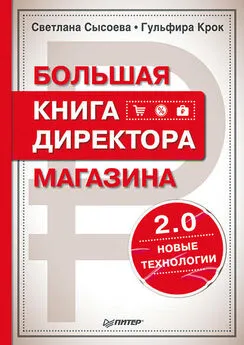
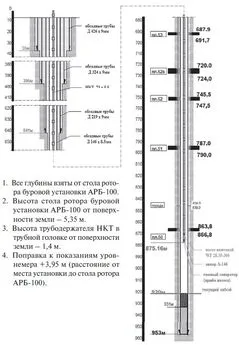
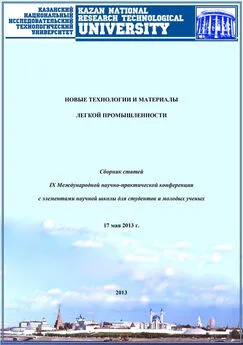


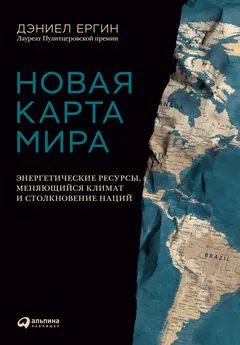
![Андрей Степанов - В поисках энергии [фрагмент]](/books/1060562/andrej-stepanov-v-poiskah-energii-fragment.webp)
